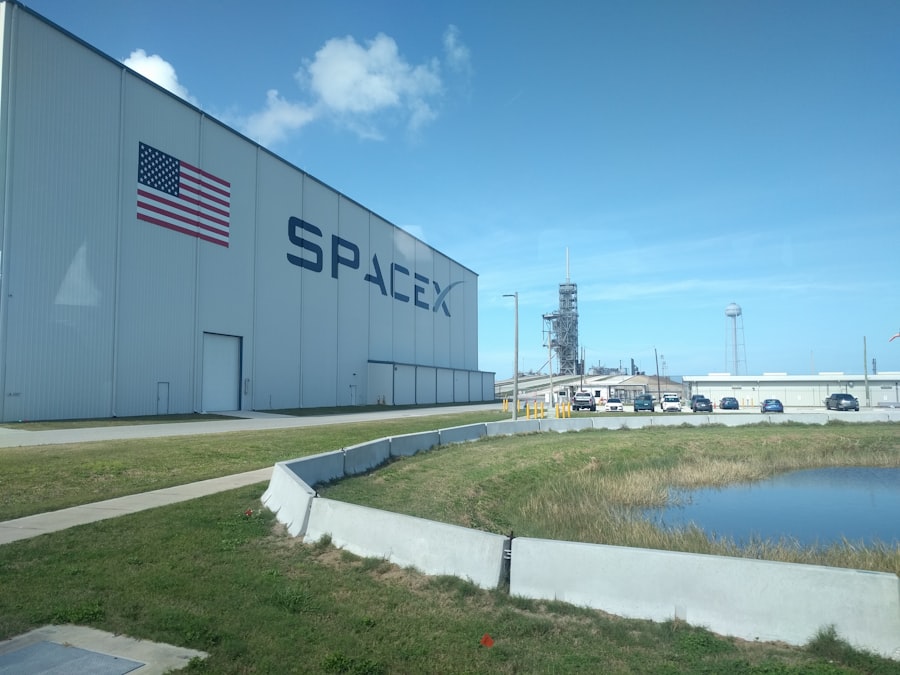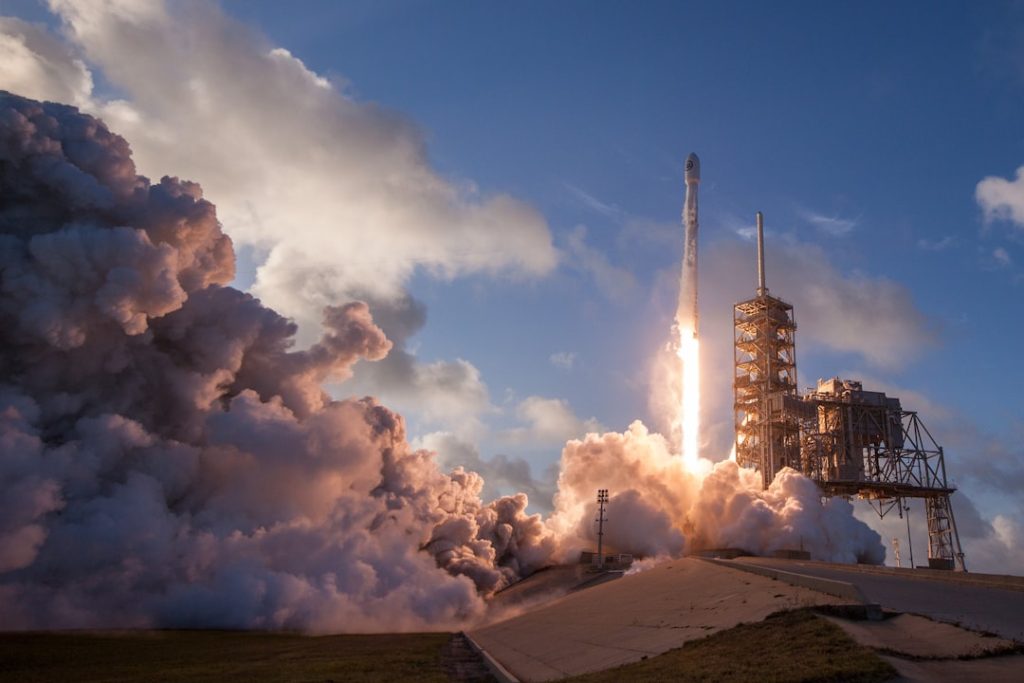Founded in 2002 by Elon Musk, Space Exploration Technologies Corp., commonly known as SpaceX, emerged from Musk’s vision to reduce space transportation costs and enable the colonization of Mars. The company began with a modest goal: to develop a reliable and cost-effective rocket that could transport payloads to orbit. The first major milestone came in 2008 when the Falcon 1 became the first privately developed liquid-fueled rocket to reach orbit.
This achievement marked a significant turning point in the aerospace industry, demonstrating that private companies could successfully compete with established government space agencies. Following the success of Falcon 1, SpaceX rapidly expanded its ambitions. In 2010, the Falcon 9 rocket made its inaugural flight, designed to carry larger payloads and eventually crewed missions.
The Dragon spacecraft, which was developed alongside the Falcon 9, became the first commercial spacecraft to deliver cargo to the International Space Station (ISS) in 2012. This partnership with NASA not only validated SpaceX’s capabilities but also set the stage for future collaborations, including crewed missions under NASA’s Commercial Crew Program. Over the years, SpaceX has continued to innovate, introducing the reusable rocket technology that has drastically reduced launch costs and increased launch frequency.
Key Takeaways
- SpaceX was founded in 2002 by Elon Musk with the goal of reducing space transportation costs and enabling the colonization of Mars.
- The latest SpaceX launch is important because it marks the first crewed mission to the International Space Station by a private company.
- The technology behind the SpaceX launch includes the Falcon 9 rocket and Crew Dragon spacecraft, which are designed for reusability and cost efficiency.
- The impact of the SpaceX launch on space exploration includes opening up opportunities for commercial space travel and advancing the capabilities of human spaceflight.
- The future of SpaceX and space travel involves plans for missions to Mars, the development of the Starship spacecraft, and the potential for space tourism.
The Importance of the Latest SpaceX Launch
The latest SpaceX launch represents a pivotal moment in the ongoing evolution of space exploration and commercial spaceflight. With each successful mission, SpaceX not only solidifies its position as a leader in the aerospace industry but also pushes the boundaries of what is possible in space travel. The recent launch, which involved the deployment of a constellation of Starlink satellites, underscores the company’s commitment to providing global internet coverage while simultaneously advancing its technological capabilities.
Moreover, this launch is significant for its implications on future missions. By demonstrating the reliability and efficiency of its launch systems, SpaceX is paving the way for more ambitious projects, including crewed missions to Mars and lunar landings as part of NASA’s Artemis program. The successful deployment of Starlink satellites also highlights SpaceX’s dual focus on commercial viability and technological advancement, showcasing how private enterprises can contribute to global connectivity while supporting broader scientific goals.
The Technology Behind the SpaceX Launch

At the heart of SpaceX’s success lies its innovative technology, particularly the Falcon 9 rocket and the Starship spacecraft. The Falcon 9 is designed with reusability in mind; its first stage can land back on Earth after launch, allowing it to be refurbished and flown again. This reusability is a game-changer in reducing costs associated with space travel.
Each Falcon 9 launch can save millions of dollars compared to traditional expendable rockets, making space more accessible for various missions. The Starship spacecraft represents the next leap in space technology. Designed for deep-space missions, Starship is intended to carry both crew and cargo to destinations such as Mars and beyond.
Its fully reusable design aims to further decrease costs while increasing payload capacity. The spacecraft is equipped with advanced heat shield technology for re-entry and features a unique stainless-steel structure that enhances durability and performance. Additionally, Starship’s Raptor engines utilize liquid methane and liquid oxygen, which can potentially be produced on Mars, aligning with Musk’s vision of making life multi-planetary.
The Impact of the SpaceX Launch on Space Exploration
| Metrics | Data |
|---|---|
| Number of SpaceX launches | Over 100 |
| Number of satellites deployed | Over 1,500 |
| Number of crewed missions | 2 |
| Spacecraft reusability | Revolutionized space industry |
| Private investment in space exploration | Increased significantly |
The impact of SpaceX’s launches extends far beyond individual missions; they are reshaping the landscape of space exploration itself. By demonstrating that private companies can successfully conduct missions traditionally reserved for government agencies, SpaceX has opened the door for increased competition and innovation within the aerospace sector. This shift has led to a surge in investment and interest in space technologies from both private investors and governments worldwide.
Furthermore, SpaceX’s achievements have inspired a new generation of engineers and scientists to pursue careers in aerospace. The company’s focus on ambitious goals, such as colonizing Mars, has captured public imagination and reignited interest in space exploration among younger audiences. Educational programs and initiatives have sprung up in response to this renewed enthusiasm, fostering a culture of innovation that could lead to groundbreaking advancements in technology and science.
The Future of SpaceX and Space Travel
Looking ahead, SpaceX is poised to play a crucial role in shaping the future of space travel. With ongoing developments in the Starship program, the company aims to conduct crewed missions to Mars within the next decade. This ambitious timeline reflects Musk’s long-term vision of establishing a human presence on other planets, which he believes is essential for humanity’s survival.
The potential for interplanetary travel could revolutionize our understanding of life beyond Earth and open up new avenues for scientific research. In addition to Mars missions, SpaceX is also focusing on lunar exploration as part of NASA’s Artemis program. The company has been selected to develop a lunar lander that will transport astronauts to the Moon’s surface by 2024.
This collaboration not only highlights SpaceX’s capabilities but also emphasizes the importance of public-private partnerships in achieving ambitious space exploration goals. As technology continues to advance, SpaceX’s role in facilitating access to space will likely expand, enabling more frequent and diverse missions.
The Role of SpaceX in Commercial Space Travel

SpaceX has emerged as a pioneer in commercial space travel, fundamentally altering how we perceive access to space. By successfully launching crewed missions through its Crew Dragon spacecraft, SpaceX has demonstrated that private companies can safely transport astronauts to and from the ISS. This achievement has not only validated commercial spaceflight but has also encouraged other companies to enter the market, fostering a competitive environment that drives innovation.
The implications of commercial space travel extend beyond government contracts; they encompass tourism and research opportunities as well. Companies like Blue Origin and Virgin Galactic are exploring suborbital tourism, while SpaceX is planning missions that could take private citizens around the Moon or even to Mars. This democratization of space travel could lead to an era where access to space becomes more commonplace, allowing individuals from various backgrounds to experience the wonders of outer space firsthand.
The Collaboration Between SpaceX and NASA
The partnership between SpaceX and NASA has been instrumental in advancing both organizations’ goals in space exploration. NASA’s Commercial Crew Program was designed to foster collaboration with private companies to develop safe and reliable transportation for astronauts to the ISS. SpaceX’s Crew Dragon spacecraft was selected as one of the primary vehicles for this initiative, leading to successful crewed flights that have restored American capabilities for human spaceflight after years of reliance on Russian Soyuz spacecraft.
This collaboration has yielded significant benefits for both parties. For NASA, working with SpaceX has allowed for cost savings and increased launch frequency, enabling more scientific research aboard the ISS. For SpaceX, partnering with NASA has provided invaluable experience and credibility within the aerospace industry.
As both organizations continue to work together on future missions—such as lunar landings under Artemis—their collaboration will likely serve as a model for future public-private partnerships in space exploration.
The Challenges and Risks of the SpaceX Launch
Despite its many successes, SpaceX faces numerous challenges and risks associated with its ambitious launch schedule. One significant concern is safety; while SpaceX has made strides in ensuring crew safety through rigorous testing and development processes, space travel inherently involves risks that cannot be entirely mitigated. The tragic loss of the Crew Dragon capsule during an uncrewed test flight in 2019 serves as a stark reminder of these dangers.
Additionally, regulatory hurdles pose another challenge for SpaceX as it seeks to expand its operations. Launching rockets involves navigating complex regulations set forth by various governmental bodies, including the Federal Aviation Administration (FAA). Delays in obtaining necessary approvals can impact launch schedules and overall mission timelines.
Furthermore, as SpaceX continues to innovate with projects like Starlink and Starship, it must address environmental concerns related to rocket launches and satellite deployments. In conclusion, while SpaceX has made remarkable strides in revolutionizing space travel and exploration, it must navigate a landscape filled with challenges and risks as it continues its journey into the cosmos.


